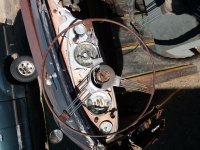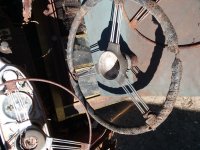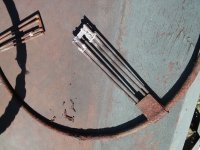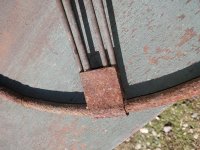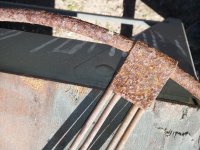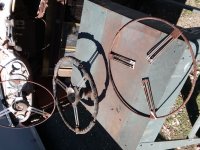-
 Hi Guest!
Hi Guest!
If you appreciate British Car Forum and our 25 years of supporting British car enthusiasts with technical and anicdotal information, collected from our thousands of great members, please support us with a low-cost subscription. You can become a supporting member for less than the dues of most car clubs.
There are some perks with a member upgrade!**Upgrade Now**
(PS: Subscribers don't see this gawd-aweful banner

Tips
- We have a special forum called "Member Articles" where you can submit actual articles for consideration for publication. Learn More
- Don't have an Avatar? If not, your avatar will default to the 1st character in your username. Go into "Account Details" to change your Avatar.
- Some basic forum navigation info: click
Hey - did you know if you click on the title of a thread it will take you to the first unread post since you last visited that thread?
- Hey Guest - Is your British Car Club in our Clubs database? If not, send me a PM - Basil

- Looking for a local club? Click the "Clubs" tab above and browse hundreds of clubs world-wide.
- Add Android or iPhone APP: click
- Did you know - any picture or video you add in your posts in any marque-specific forum will also get added to the Media Gallery automatically.
- A few more tips about posting and replying: click
- Hey there Guest - be sure to keep your profile page up to date with interesting info about yourself: learn more
- More tips and tricks on Posting and Replying: click
 STOP!! Never post your email address in open forums. Bots can "harvest" your email! If you must share your email use a Private Message or use the
STOP!! Never post your email address in open forums. Bots can "harvest" your email! If you must share your email use a Private Message or use the  smilie in place of the real @
smilie in place of the real @
- Want to mention another member in a post & get their attention? WATCH THIS

- So, you created a "Group" here at BCF and would like to invite other members to join? Watch this!
- Hey Guest - A post a day keeps Basil from visiting you in the small hours and putting a bat up your nightdress!
- Hey Guest - do you know of an upcoming British car event?
 Pretty Please - add it to our Events forum(s) and add to the calendar! >> Here's How <<
Pretty Please - add it to our Events forum(s) and add to the calendar! >> Here's How << 
- Hey Guest - you be stylin'
Change the look and feel of the forum to fit your taste. Check it out
- If you run across an inappropriate post, for example a post that breaks our rules or looks like it might be spam, you can report the post to the moderators: Learn More
- If you would like to try some different "looks" or styles for the site, scroll to the very bottom, on the left and click the Style Selector.
You are using an out of date browser. It may not display this or other websites correctly.
You should upgrade or use an alternative browser.
You should upgrade or use an alternative browser.
Steering Wheel Repair
- Thread starter Jerry
- Start date
Offline
TR2/3/3A - Steering Wheel Restoration
I am thinking a head a bit, I was disappointed when my car was at the body shop the steering wheel was left out in the sun and elements and treated with absolutely no respect. I believe the steering wheel is a focal point of the car’s interior and I’d like to think I can bring it back to its...
Bitchun Bob
Freshman Member
Offline
Anyone have a picture of a wheel, or parts of a wheel, with no plastic on it?
With old solid axle Corvettes the cracks usually mean that the underlying weld has broken, and needs to be repaired if the plastic repair is going to hold.
I'm just wondering if the Healey wheels have welds, or how the spokes are held to the outer ring. Will these suffice. Looks like there spot welded to ring.
Attachments
Bob_Spidell
Yoda
Offline
Looks to be a smaller diameter than the original battleship helm, no?
Bitchun Bob
Freshman Member
Offline
When I have repaired steering wheel cracks in the past I've used Tiger Hair. It's chopped fiberglass blended in a resin and you add a few drops of hardener to the amount you need for the job. When repairing cracks in your wheel you first need to grind it out a little and taper it in to the bottom of the crack. the wider the taper the better. Then fill and sand after hardening. Apply more if needed till satisfied with smoothness and look. Any two stage epoxy with fiberglass strands will work. By tapering and feathering in your fiberglass filler it should never crack again. Paint with a two stage epoxy paint. To eliminate cracking; avoid direct sunlight and extreme heat. Cold temps have no adverse effects, unless you smack it with a hammer or such. Also avoid using your steering wheel to keep you from going thru the windshield when you slam on the brakes at stop lights, animals crossing the road, or pretty girls standing on the corner, etc. etc.
Thanks for the photos. Definitely places where there is flex that can lead to cracking.
In Corvettes, my restorer friend finds that today's "larger owners" use the steering wheel as an assist to get in and out, flexing the wheel and causing cracks. That doesn't help.
In Corvettes, my restorer friend finds that today's "larger owners" use the steering wheel as an assist to get in and out, flexing the wheel and causing cracks. That doesn't help.
Bitchun Bob
Freshman Member
Offline
I can believe that. When they produce the steering wheel. They need to reinforce the plastic with fibers of some sort or make the thing using carbon fibers. The wheel could flex all it wants then and not crack. It's like pouring a slab of concrete and leaving out the wire mesh or adequate rebar. That's also the problem with JB Weld. There's nothing in it too reinforce it. The reason wooden wheels don't crack. Mother nature put fibrous strains in them.Thanks for the photos. Definitely places where there is flex that can lead to cracking.
In Corvettes, my restorer friend finds that today's "larger owners" use the steering wheel as an assist to get in and out, flexing the wheel and causing cracks. That doesn't help.
Offline
Several years ago I saw a Nash Healey at the Scottsdale Barrett-Jackson auction with the steering wheel rim broken off completely and lying on the passenger seat. My hunch is that their contract driver was a large fellow who wrenched on the relatively delicate steering wheel getting out and ... CRACK.
You can torque most American car steering wheels that way and it's no problem. Not so with the steering wheels of old European cars.
You can torque most American car steering wheels that way and it's no problem. Not so with the steering wheels of old European cars.
Dandare
Jedi Trainee
Offline
Not much help if you don't have any plastic at all though?Dandare, that article was very helpful.
Danny



